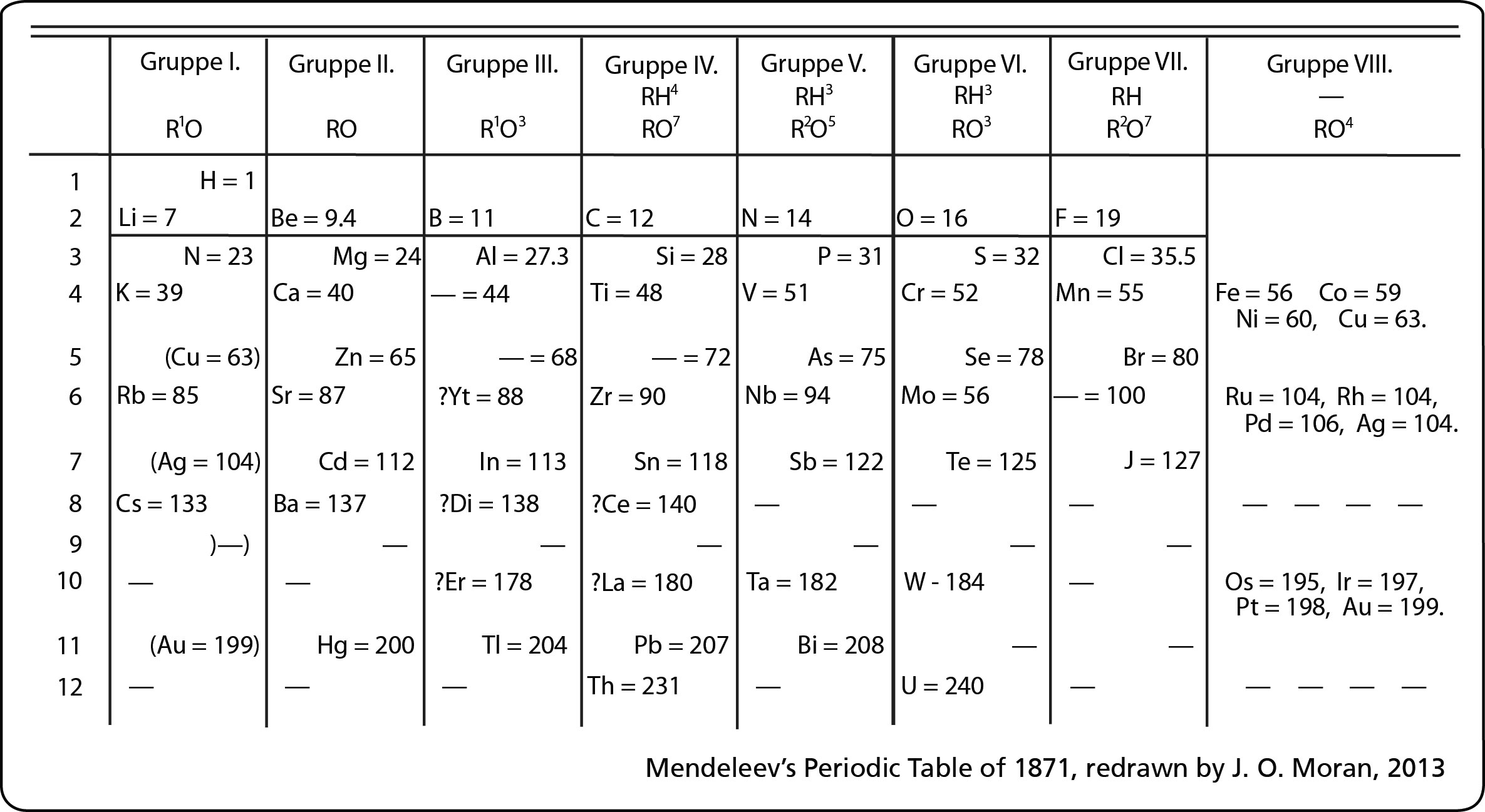Global Ocean Conveyor
-
Today students began class with a BrainPop on currents and took the quiz.
Tim and Moby did an excellent job describing how currents affect global
weather ...
6 years ago
 Atoms, or elements, are the smallest unit of matter. They retain their identity in chemical reactions and are combined to form compounds and everything in the universe.
Atoms, or elements, are the smallest unit of matter. They retain their identity in chemical reactions and are combined to form compounds and everything in the universe. Mendeleev designed the periodic table by looking at the properties of elements on cards and arranging them different ways until he got a system that worked. No one told him how to do it, he just did it until it worked. He even left spaces for elements that were discovered in his lifetime. (More info about Mendeleev) His periodic table was set up according to atomic mass number. The current table, altered slightly by Moseley, is organized by atomic number (number of protons). This is an AMAZING Video about Mendeleev and his PT!
Mendeleev designed the periodic table by looking at the properties of elements on cards and arranging them different ways until he got a system that worked. No one told him how to do it, he just did it until it worked. He even left spaces for elements that were discovered in his lifetime. (More info about Mendeleev) His periodic table was set up according to atomic mass number. The current table, altered slightly by Moseley, is organized by atomic number (number of protons). This is an AMAZING Video about Mendeleev and his PT!Some fun facts about candy from the American Chemical Society are
- Hard candy is technically a glass — so much so that it is sometimes used to make the “bottle” that gets broken over someone’s head in a fight scene.
- The same chemical that makes grapefruit taste sour — citric acid — is in sour-tasting candy.
- Peppermint oil comes from a plant, and some research shows that candies flavored with it can help people concentrate better.
- Ever wonder how they get liquefied cherries into a chocolate-covered cherry without leaving an injection hole? The candy actually starts with a hard cherry center that slowly softens after the chocolate is applied, thanks to a chemical called invertase that’s added to the recipe.
- Cotton candy is almost pure sugar that has been melted and then spun.
- Gummies contain flavor, sugar and a seaweed chemical called carrageenan, which makes them chewy.
- Licorice contains a smelly compound that’s found in a spice called anise.
 For more information about candy in the United States, check out the National Confectioner's Association.
For more information about candy in the United States, check out the National Confectioner's Association. 
 Chromatography can be used to separate any mixtures with different size particles and actually gel electrophoresis used for DNA analysis works on a similar principle.
Chromatography can be used to separate any mixtures with different size particles and actually gel electrophoresis used for DNA analysis works on a similar principle. Students need to be familiar with certain lab equipment and its purpose, even if we won't use all of it in labs for high school chemistry. Students identified equipment using examples of the real thing (we made this into a contest) and also by identifying black and white drawings.
Students need to be familiar with certain lab equipment and its purpose, even if we won't use all of it in labs for high school chemistry. Students identified equipment using examples of the real thing (we made this into a contest) and also by identifying black and white drawings.
